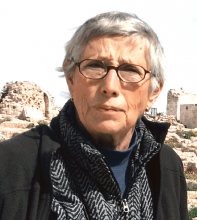You are here
Raqqa's reconstruction squeezed by a political vice
Oct 24,2018 - Last updated at Oct 24,2018
Mosul and Raqqa remain piles of rubble more than a year after these historic cities were liberated from the brutal grip of Daesh by local forces and the US-led coalition. A Marshall Plan comparable to the reconstruction programme for Europe funded by the US after World War II is needed for these and other mainly Iraqi cities devastated in the war against Daesh. But there is no contemporary Marshall Plan, US aid has been insufficient to clear the rubble and bury the corpses trapped beneath.
Once Daesh was driven from these cities, the international community forgot about Mosul and Raqqa. The Daesh occupation no longer remained a threat to the stability of this strategic region or to nearby Europe and the wider world.
At least 380,000 people remain displaced in and near Mosul, once Iraq's second largest city and oil hub and devastated heir of the ancient world. The Norwegian Refugee Council warned last July that 8 million tonnes of debris remains in the city. "Around 90 per cent of western Mosul is still devastated, 62 schools are completely destroyed and 207 damaged. A third of the displaced Mosul residents have told [the council] that they may face eviction from where they are sheltering because they cannot afford the rent."
The council estimates that $847 million is needed to repair only the basic infrastructure. Some 54,000 homes in the city and surrounding area were destroyed, leaving thousands stuck in camps. As much as $88 billion is needed to repair the damage caused by the nine-month campaign to defeat Daesh. Only a fraction of this amount has been provided; the Trump administration is not prepared to contribute.
While the university is functioning, its premises have been severely damaged and Daesh burned 30,000 books in its main library, which had a collection of more than a million volumes before the arrival of the takfiris. Mosul had 10 hospitals; now only one is serving those who remain of Mosul's pre-Daesh 2.5 million residents. Fuel is scarce and electricity intermittent. Men and women, some accused of supporting Daesh, continue to be abducted by unknown elements. The police are powerless to deal with insecurity. Provincial and local authorities cannot cope with the scale of the crisis while Baghdad is absent.
The only international agency seriously concerned about reconstruction is the UN Educational, Scientific and Cultural Organisation (UNESCO), which is determined to rebuild some of Mosul's historical landmarks, including the main market, the university's central library, two churches and a Yazidi temple. The most high profile project is Al Nuri Mosque, undertaken with a $50 million grant from the United Arab Emirates. The grand mosque was famous for its 8th century leaning minaret.
Syria's Raqqa, the summer capital of the 8th century Abbasid Caliph Haroun Al Rashid, is no better off than Mosul. Civilians who have returned to Raqqa live in fear of daily bombings and shootings by Daesh underground fighters who sneak back into the city. Raqqa was occupied by Daesh in 2013 and declared the capital of its false "caliphate". Terror continues to reign in the city, which became the so-called "capital of terrorism".
The four-month offensive to "free" Raqqa killed 1,400-2,000 civilians and destroyed 90 per cent of the city. The US Central Command has rejected such high casualty figures and claims for compensation. Washington admits no accountability. While the Mosul offensive took place under both the Obama and Trump administrations, the Raqqa campaign was conducted solely under Donald Trump. Airwars and the Daily Beast reported that under Trump, civilian casualties doubled almost certainly because he placed the conduct of the assault in the hands of field commanders. Aircraft involved were almost entirely from the US. Most devastation was caused by US air and artillery strikes, stated USAID head Mark Green.
Since its liberation, 150,000 people are said to have returned, shops have reopened. Thousands, however, remain in a displaced tent camp at Ain Issa, 50 kilometres north of Raqqa. Most do not have the means to rebuild their homes.
The coalition bombed all Raqqa's bridges and roads to prevent Daesh fighters from escaping from the city. Eight metal bridges have been promised but remain to be built.
Civilians are traumatised by the devastation wreaked by the US-led "war of annihilation" against Daesh. Amnesty reported that 30,000 homes were destroyed and 25,000 damaged. Teams recovering bodies buried beneath the rubble have only the most basic equipment and little financial support. Thousands of bodies still have to be recovered.
Coalition deminers and engineers helped remove explosives and renovate schools but there has been no large-scale, systematic reconstruction. The city council does not have enough money to clear the debris or restore electricity and water systems.
The Obama administration allocated $230 million to help stabilise Raqqa and the vast area in eastern Syria controlled by the US and its Syrian Kurdish allies. Trump cancelled this funding last August. Kuwait has stepped in to provide $50 million and Saudi Arabia $100 million. But these sums, which provide a start, will not even repair the water and electricity networks.
Raqqa's reconstruction is also squeezed by a political vice. Western powers do not want to rebuild a city which is likely to return to Damascus' rule. Even if funds were made available, Turkey is not prepared to allow equipment and construction materials to flow across its border into Raqqa because the city council is dominated by the Syrian Kurdish Democratic Union Party and its militia which are allied to Turkey's dissident Kurds.













